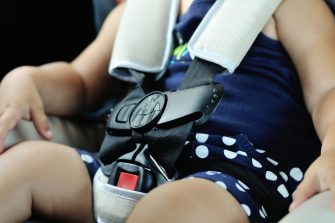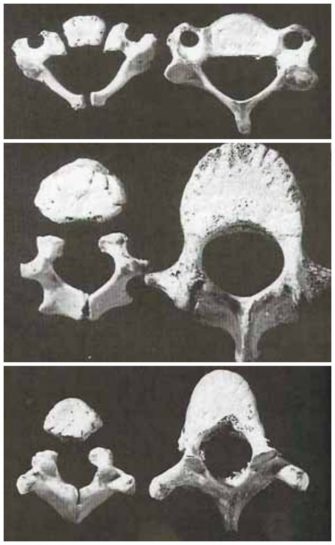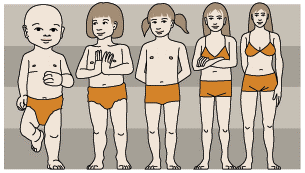Why Rear Facing?
 If you’re looking for just the facts about rear facing versus forward facing, you’ve come to the right place. In an article entitled, “Why Rear Facing, the Science Junkie’s Guide”, the author reviews the multiple factors that are involved in this discussion; the unique physiology of a young toddler combined with the type of force in the most severe crashes adds up to the perfect storm that puts kids at significant risk if they are forward facing too early.
If you’re looking for just the facts about rear facing versus forward facing, you’ve come to the right place. In an article entitled, “Why Rear Facing, the Science Junkie’s Guide”, the author reviews the multiple factors that are involved in this discussion; the unique physiology of a young toddler combined with the type of force in the most severe crashes adds up to the perfect storm that puts kids at significant risk if they are forward facing too early.
First, they explore the difference in anatomy. Toddlers are not just small adults; their bodies are still developing and those developmental changes make them more vulnerable than an adult. A toddler’s vertebrae are connected via cartilage rather than ossified bone. Those connections are called synchondroses, which are slowly closing over time. There are three major points of ossification, each with two synchondroses. According to a study published in the Association for the Advancement of Automotive Medicine, the first station to close is the C3, second is the axis, and third is the atlas. The results of the study show:
· 50% probability that the primary closure of the C3 is complete at age 2 and the secondary at age 3.
· 50% probability that the primary closure of the axis is complete at age 5 and the secondary at age 6.
· 50% probability that the primary closure of the atlas is complete at age 7 and the secondary at age 8. 1
 Vertebrae age 1 and 6 – Photo Credit: White, T. Human Osteology, 2000
Vertebrae age 1 and 6 – Photo Credit: White, T. Human Osteology, 2000
This image shows the cervical (top), thoracic (middle), and lumbar (bottom) vertebrae of a one year old (left, each photo) and six year old (right, each photo). Note the easily visible synchondroses in each.
These findings show that before age two, none of the cartilaginous spaces have completed ossification. Those pieces of cartilage have the ability to stretch up to two inches. Yet only 1/4″ stretch is enough to rupture the spinal column, resulting in paralysis or death. 2
 Image Courtesy of Securatot UK
Image Courtesy of Securatot UK
Additionally, a child’s immature spine is responsible for supporting a much larger proportion of body weight than an adult’s more mature spinal column. The average nine month old child’s head makes up 25% of his body weight; while an adult’s head only makes up 6% of its body weight. 3 This difference in proportion only adds to the need to safeguard the spinal column.
Second, they discuss crashes. According to NHTSA, roughly 60% of vehicle crashes are frontal impacts and 20% are side impacts. During a crash, occupants will travel towards the point of impact, putting all the stress on the neck and spine. At that moment there are actually three impacts: the vehicle striking whatever it strikes, the body of the occupant being retained by the seat belt or harness, and then the internal organs striking the front of the inside of the body. When someone is rear facing, crashes two and three occur in concert and the forces of the crash are more equally diffused along the shell of the seat, holding the neck and spine in line.
The American Academy of Pediatrics issued guidelines recommending rear facing until a minimum of age two, based on findings published by BMJ Injury Prevention. This study compared injury statistics for 15-years’ worth of crashes involving children under age 2. Researchers compared the injuries sustained by the children in crashes and found “the odds of severe injury for forward-facing infants under 12 months of age were 1.79 times higher than for rear-facing infants; for children 12 to 23 months old, the odds were 5.32 times higher.” 4
In 2011, the American Academy of Pediatrics issued guidelines recommending rear facing until a minimum of age two, based on findings published by BMJ Injury Prevention. This study compared injury statistics for 15-years’ worth of crashes involving children under age 2. Researchers compared the injuries sustained by the children in crashes and found “the odds of severe injury for forward-facing infants under 12 months of age were 1.79 times higher than for rear-facing infants; for children 12 to 23 months old, the odds were 5.32 times higher.” 4
Why the recommendation to rear face until a minimum of age two? The only data at the time with hard numbers comparing injury when rear versus forward facing was centered around that age group. However, age two is truly a bare minimum. According to the previously noted study, at age three there is still only a 50% probability that the C3 vertebra has finished ossification. The older a child gets, the more time their spinal column has to strengthen and the reality is the longer, the better. Without a CT scan, there is no way to know what stage of development your child’s spinal column is in, so the safest option is to rear face to the maximum weight or height of a convertible car seat.
As time goes on and more older children are rear facing, there is more scientific data to compare the benefits of a rear facing car seat for preventing spinal injury. In fact, In 2018, the Academy issued an update to those guidelines based on additional research that had been gathered in recent years. The new guidelines recommend children ride rear-facing “as long as possible up to the limits of their car safety seat.” Most car seats on the market today will easily rear face even above average height and weight kids until 3-4 years of age. Additional information regarding the updated guidelines can be found at https://www.tnchiro.com/articles/new-car-seat-guidelines-released-august-2018/
Rear facing is not a choice to be made based on parenting style or opinion; it’s one based on scientific fact. The more we know about crashes, the better we’re able to protect our kids from severe injury as a result of a crash.
Source: http://csftl.org/why-rear-facing-the-science-junkies-guide/